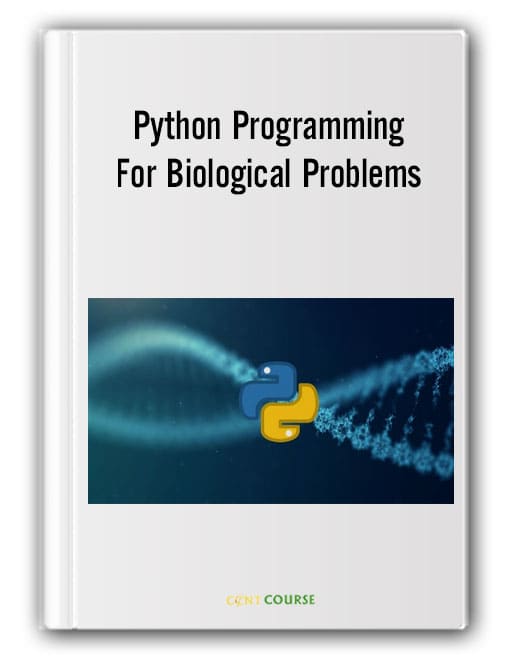Python Programming for Biological Problems
Python Programming for Biological Problems helps you solve more than 30 exercises and 4 Biology projects quickly and easily.
Categories: IT & Software, Free Download
Python Programming for Biological Problems Description
Python Programming for Biological Problems shares with you Python, which is nowadays one of the most used programming languages, to develop useful applications in molecular biology, ecology, research on diseases, among others.
Here’s what you will learn in this course:
- Introduction
- Course content – Jones
- Course content – Guilherme
- Introduction to Python
- Installation
- Python IDEs
- Variables, data types, and inputs
- Variables and constants
- Mathematical operations
- Exercises
- Exercise 1: Ki calculation
- Exercise 2: Recombination of genotypes
- Logical and relational operators
- Logical and relational operators
- Exercise
- Exercise 1: Comparing weights of proteins
- Strings
- Strings
- Exercises
- Sequences to be used in exercise 2
- Solution: abbreviating scientific names
- Solution: Extracting an exon from a gene
- Conditional operators
- Conditional operators
- Exercises
- Solution: Taxonomic families
- Solution: Codons in a RNA sequence
- Loops
- For loop
- While loop
- Exercises
- Solution: transcription of DNA
- Solution: Bacterial growth
- Collections
- Tuples and lists
- Dictionaries and sets
- Matrices
- Exercises
- Dictionary with the symbols of their aa’s and the mass
- Solution: mass of amino acid sequences
- Solution: transcription of DNA
- Project 1: Simulating a biology test
- Questions for the test
- Solution: part 1
- Solution: part 2
- Solution: part 3
- Functions
- Functions
- Exercises
- Solution: function of recombination
- Solution: Ki calculation
- Solution: transcription function
- Project 2: calculating gene frequencies
- Chi-square distribution table
- Project 2: part 1
- Project 2: part 2
- Modules
- Math and datetime
- Random and time
- Exercises
- Solution: generation of random DNA sequence
- Solution: function of population growth
- Custom modules
- Creating packages
- Exercises
- Solution: DNA module
- Solution: module for ecology functions
- Errors and exceptions
- Errors and exceptions
- Exercise
- Solution: validation of numerical inputs
- Project 3 – Identification key
- Image of the key
- Solution: part 1
- Solution: part 2
- Text files
- Reading and writing text files
- Genetic databases
- Protein database PDB
- Exercises
- Solution: reading a DNA sequence
- Solution: reading a .pdb sequence
- Project 4 – Reading and processing gene sequences
- Solution: part 1
- Solution: part 2
- Solution: part 3
- Regular expressions
- Introduction
- Search, match and find all
- Regular expressions – main metacharacters and quantifiers
- Exercise
- Solution: Identifying species names in a text
- Sample sequence for exercise 2
- Solution: Analyzing a genetic sequence
- Object oriented
- Introduction
- Practical
- Exercise
- Solution: Class ‘Plant’
- Solution: Class ‘DNA’
- Final remarks
- Final remarks
Related products
Free Download
Free Download
Free Download
Free Download
Free Download
Free Download











